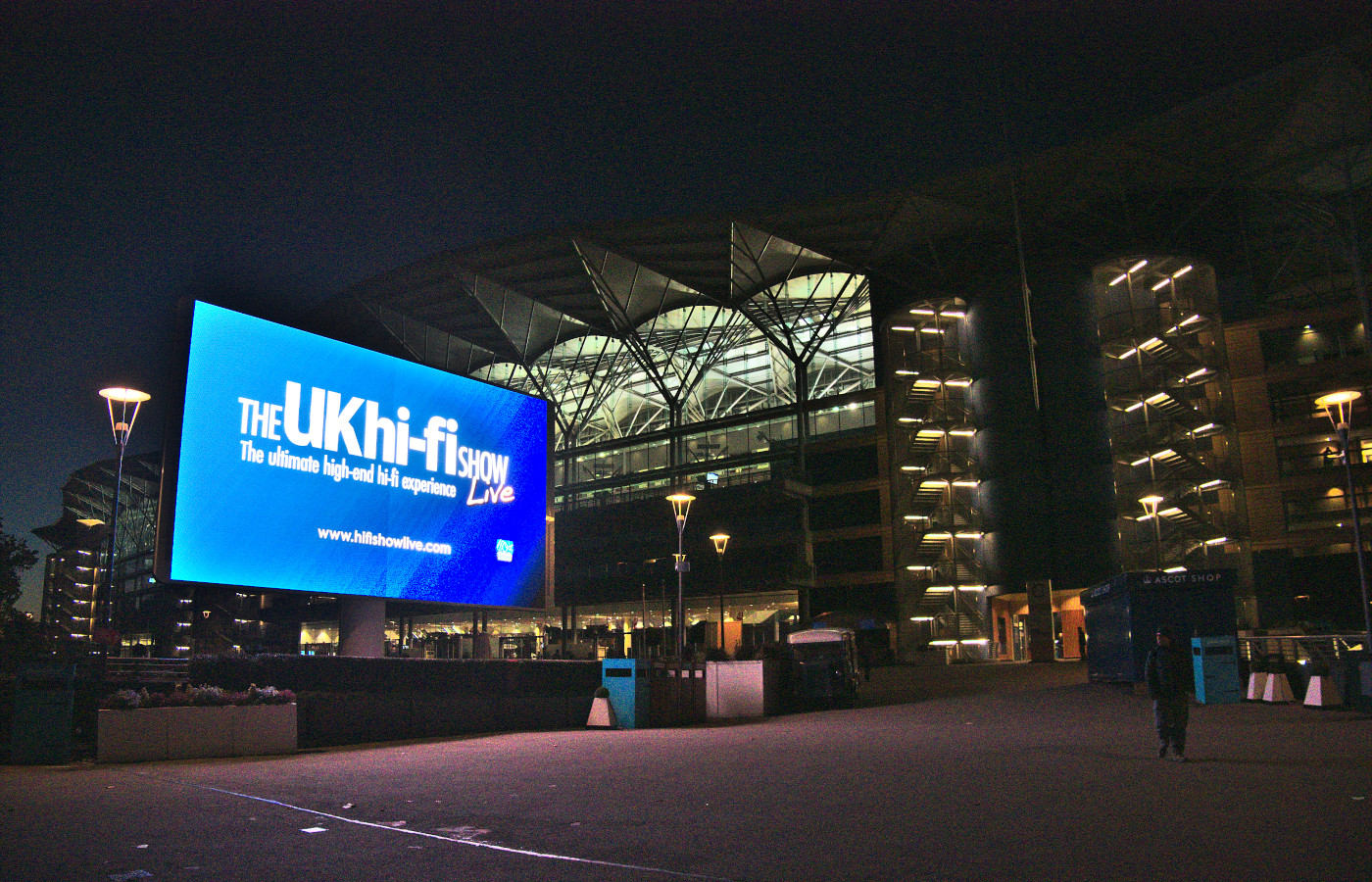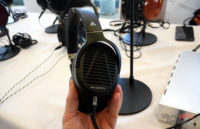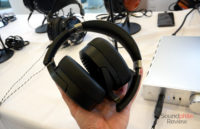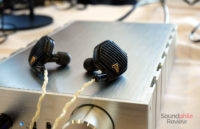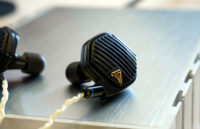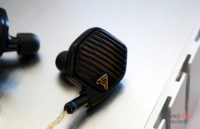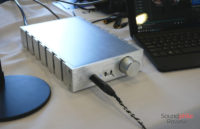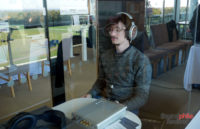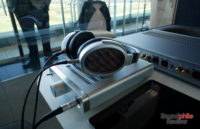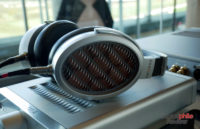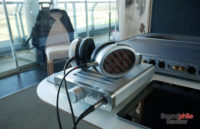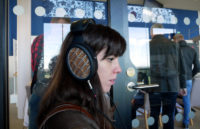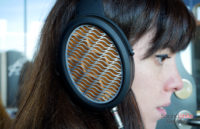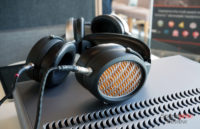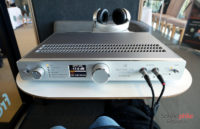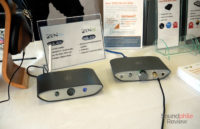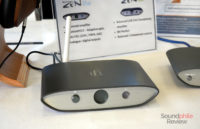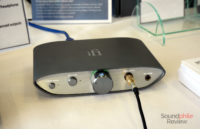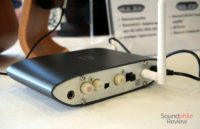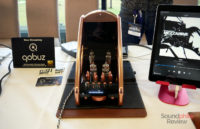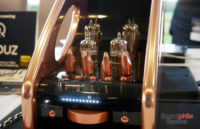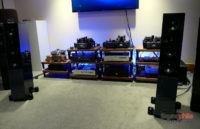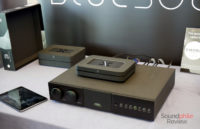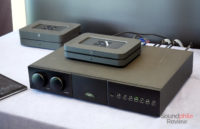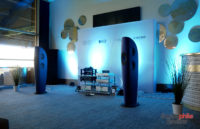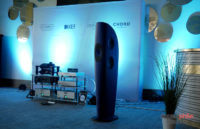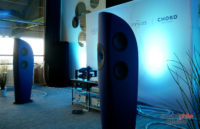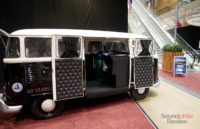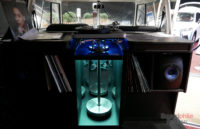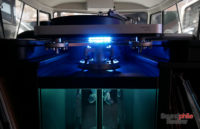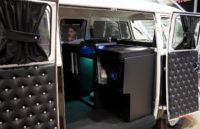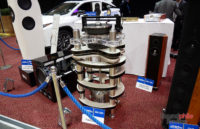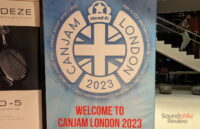Held in the famous Ascot Racecourse, the UK HiFi Show Live has summoned quite a lot of audiophiles from all over Great Britain – and sometimes even from outside the kingdom. That’s my case (though I now live in London, so I don’t know if that counts anyway). The show had many of the most important brands in the audiophile world on display and a wonderful occasion to see their products first-hand – or, better still, first-ear.
The scale of the show was such that I could not possibly cover it all. Given the headphones-first nature of this blog I gave precedence to those, but there are a few other interesting bits I collected along the way.
Audeze
The Audeze stand (managed by Exertis, UK distributor of Audeze) featured the all-new LCD-1, which is the most affordable full-size planar to date for the American brand at £399. The LCD-1 are relatively small, with a plastic build that appears modern and pleasant to both the eye and touch. The Audeze LCD-1 are really light and therefore comfortable, as far as I’ve been able to assess in the few minutes I tried them. In terms of sound, the tuning is warm, yet very well balanced. This is Audeze’s house sound, just in a smaller form factor. What impressed me is the width of the soundstage: it’s large, almost expansive, with some depth too.
Considering they retail for $400, the Audeze LCD-1 will probably sell like hot cakes. I maybe could get my hands on a unit in the future, so stay tuned for more details!
I also tried the LCD-i4, which were quite impressive in the open presentation of soundstage and had a really warm character, almost to the point of bass taking over everything else. They were also oddly comfortable to wear (and I say “oddly” because they don’t fit like usual in-ear headphones). There was also a Deckard, which is a rarity one does not find too easily!
Warwick Acoustics
I have to be honest: Warwick Acoustics got me really impressed. And that’s starting with their booth. They set up a private listening room that was quiet and cosy. If you people at Warwick will read this, I want you to know that you now spoiled my usual listening space because I now want one of those cosy listening spaces in my house. On with the actual headphones, though. (and by the way, the guy you see in the pictures is actually me! Hello there! And the girl is my girlfriend. It was time for a debut, wasn’t it?).
Warwick Acoustics had their two headphones on display: the £4,995 Sonoma M1 and the £20,000 APERIO. Both are electrostatic headphones with their own energizer unit, which also includes a DAC and an amplifier. The Sonoma M1 are large yet very comfortable as they don’t weigh too much despite the size. Their signature seem to follow the Harman curve with a bit less emphasis on upper midrange, and then with a somewhat emphasised bass and mellow treble. They’re superbly detailed, with a wide soundstage that also has real depth. I tested them with tracks from Pink Floyd’s The Dark Side of the Moon and man did they sound great!
The APERIO, on the other hand, are larger and heavier. Their sound seems to target the Diffuse Field curve: their bass seems a bit recessed and upper midrange and lower treble seem emphasised. The contrast between the Sonoma M1 and the APERIO is stark. The APERIO offer an unparalleled level of detail – it’s even greater than the M1’s. Their soundstage presentation and imaging is a bit odd though: the two channels seem to be separated and this makes the really wide soundstage appear as if it extended on the sides of the listener, with little presence in front of them.
I may have a chance to try them both for longer in the future – they are easily the most interesting headphones I’ve tried on the showfloor together with HiFiMAN’s $50,000 Shangri-La, so I really look forward to putting them through their paces and see what they can do.
iFi Audio
iFi was showcasing their whole line-up of products – including the PowerStation, the xDSD and the xCAN. They also had the new Zen product line, which currently consists of the Zen Blue (a Bluetooth DAC/transport) and the Zen DAC (a desktop DAC+amp). I tried the latter and it seemed to have room for powering even demanding headphones. At the sub-$200 price those devices are sold at, they seem like a steal, even just for their design and build quality.
Manley Audio
Manley is famous for their wild designs, and the Absolute headphone amplifier is no exception. If anything, it’s even wilder than their speaker amp designs! It is certainly unique in its appearance, though that’s not the only thing that sets it apart. It sounds smooth, warm and pleasant, like a cup of tea in a cold autumn day. Poetry aside, it really does sound tubey as one would expect.
The Audio Physic Midex speakers that were on show with the Manley amplifiers surprised me with their representation of bass: there was an acoustic live version of Hotel California playing and you could definitely hear the drums playing in a well-defined space of the stage. They really had an incredible representation of the stage.
Bluesound
Bluesound was represented by their UK distributor Anatech. Simon Lever (whose lovely British accent I envy so much) introduced the audience to the Bluesound Powernode 2i, a network player with an integrated speaker amplifier stage. They set up a rather unusual but really effective demo: they had this Node 2i network player on top of a Naim amplifier (for a total cost of ~£4,000) driving a set of speakers, with a couple boxes on the side. They asked for impressions on the sound and after that they lifted the boxes, revealing that it was the smaller (and cheaper, retailing for ~£800) Powernode 2i that drove the speakers. Needless to say, everyone in the room was quite impressed with that.
Simon and his colleague Kris then actually connected the speakers to the Naim amplifier, again asking for the audience to express their opinion and find the differences between the two setups. Here are my impressions: with the Powernode 2i the sound was warmer, less detailed and with a slightly smaller soundstage, but it also was more enjoyable in a way. Many in the audience said that they actually preferred the warmer, mellower sound of the Powernode to the more analytical sound of the Naim amplifier.
Now, the aim of the demo was to showcase that even a small device such as the Powernode 2i can drive speakers with good results and is a valid complement to more expensive setups. I write “complement” because a device like the Powernode 2i is not meant to completely replace a traditional system, but it’s meant to provide power to speakers in different rooms – be it in the bedroom, in the kitchen or even in the bathroom (e.g. for ceiling speakers). And it seems to be great at that!
KEF & Chord
Last booth/room I visited was the KEF and Chord one. The two companies were each introducing a new product: Chord was launching the new Ultima 3 amplifiers, KEF was showcasing the Blade II for the first time in a UK show.
Now, it’s honestly hard to say anything about the Chord amplifier. I don’t know the Blade II nor the tracks being used well enough to say anything meaningful about the amplification stage. The only thing I can reliably say about it is that the new Ultima 3 amplifiers are massive and they have that weird steampunk-like design that made Chord famous (among other things). That’s pretty obvious, but saying anything more would be dishonest for both the company and you readers.
On the other hand, though, I can say something more about the speakers. In that venue the KEF Blade II sound thoroughly detailed, with a certain warmth that does not harm the general balance. What’s most impressive about them is the detail: they really ooze details everywhere. The scene is large and sound appears spherical more than coming from a point-like source. That’s thanks to the combination of the Uni-Q drivers (a midrange woofer with a tweeter positioned in the acoustic centre, a technology developed 30 years ago) and the two pairs of woofers on the sides, which emit sound laterally. The results are – needless to say – really remarkable.
Bonus!
A few bonus pictures from the show. You can see a €130,000 turntable developed to be stable even in the higher part of a skyscraper in Hong Kong, where the wind makes the whole building move – not the ideal setting to play vinyl records. Funnily enough, this same technology – which uses a counterweight and a moving base to keep the deck steady – was used inside a van, where the turntable could keep playing even while driving.

